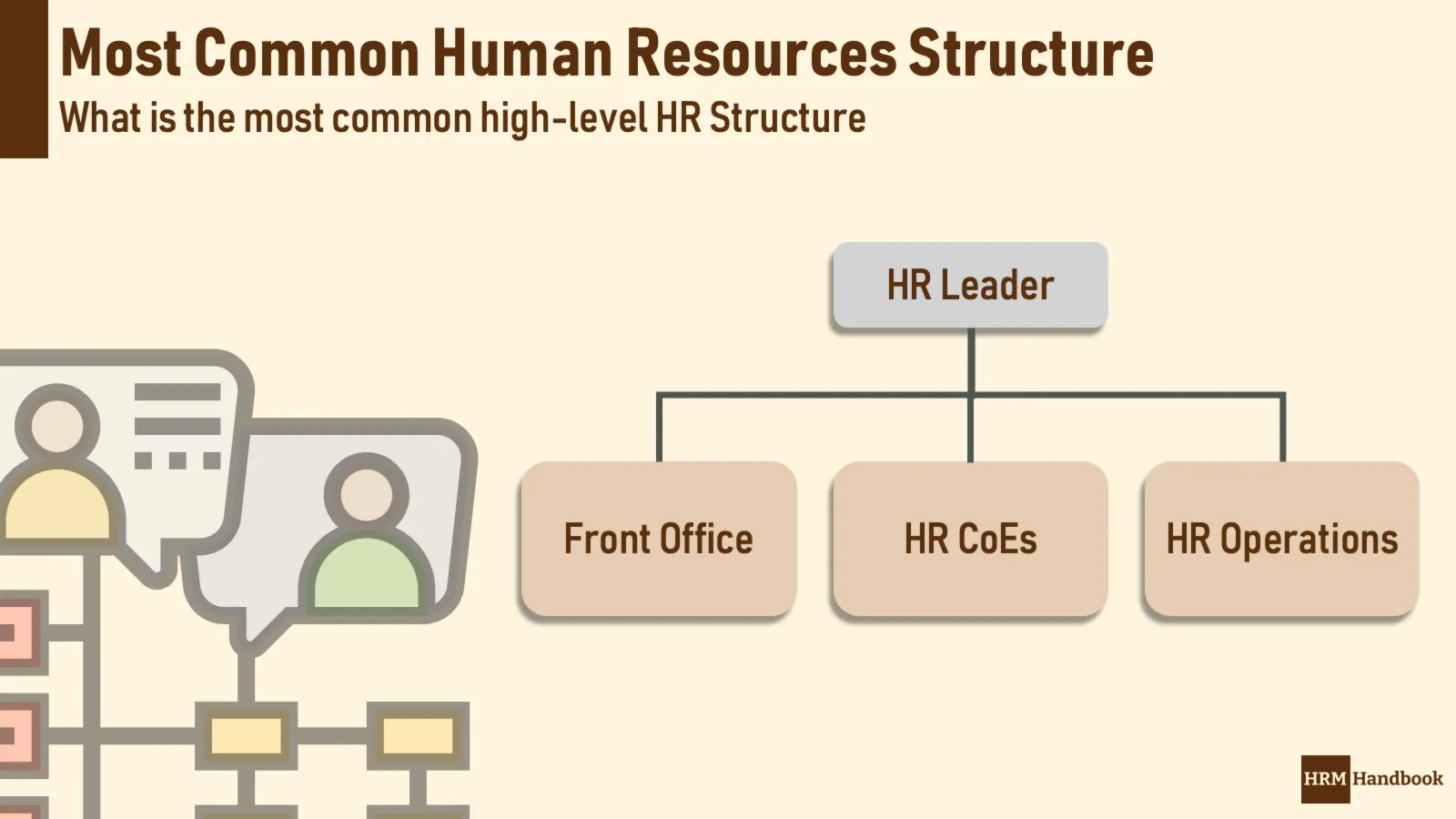Common Human Resources Organization Structure
The HR Management and the HR Model define the basic prerequisites for the HR Organizational Structure. Each organization designs its organizational structure differently and uses different approaches to set the right level of managerial layers and the way of cooperation between HR Front Office, HR Back Office and HR Centers of Excellence. Generally, many similarities can be found in most organizations as they organize their HR Functions.
Most HR Functions operate under similar pressures from stakeholders. The top management demands the execution of the business strategy and the HR Strategy. The line management demands the perfect support from HR Processes. Employees demand a quality of employee services. HR has many stakeholders and the HR Organizational Structure has to fit with all requests.
The organizational structure should be set as the result of the HR Management Goals and the defined HR Model. These two components define the importance of HR Processes and they set clear priorities. The organizational structure does not define priorities, the priorities should be reflected in the organizational structure and workforces assigned to particular HR Processes.
The HR Organization defines clear boundaries around HR Processes. The Compensation and Benefits unit should be clearly about the compensation of employees and building different compensation strategies. The line managers and employees in the organization should not be confused by unclear boundaries between HR Processes.
The internal clients have to see the clarity in the organizational structure design. Additionally, HR employees will feel more comfortable with the clear set-up and visible boundaries inside HR.

Each organizational structure restricts the free flow of information. The clear communication channels should be designed as all HR employees know information significant for their job. Many HR Functions do suffer from the insufficient information.
The HR Organizational Structure should be as flat as possible. The decision making responsibility should be given to the lowest levels of the HR Organization. The employees will not be seen as accountable in the organization, if they have no authority to make a decision. The managers should be focused on the development of employees and they should delegate the decision authority. Too many managers in the structure always delays the decision making process.
The organizational structure has to be flexible. The priorities of the organization can change quickly and the reaction is needed. The inflexible organizational structure makes the appropriate reaction almost impossible or makes it inefficient. No employee should take the current job position as the final destination.
The structure has to support the career development in Human Resources and the career paths in HR should be aligned with the organizational structure.
HR Organization Structure Section Content
General
- Common HR Functions and Units
- Key Responsibilities of Common HR Functions
- How to Design HR Organization Structure
- Designing Strong and Resilient Communication Channels in Human Resources
HR Front Office